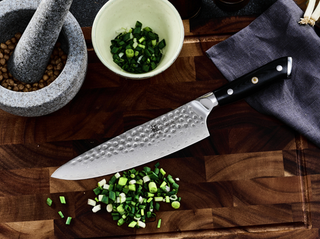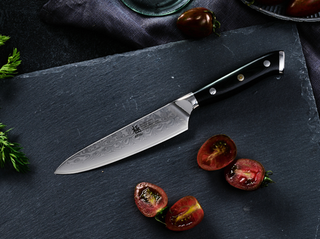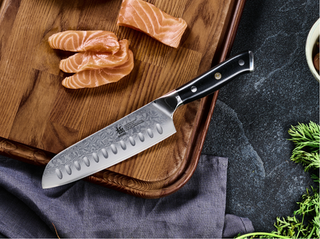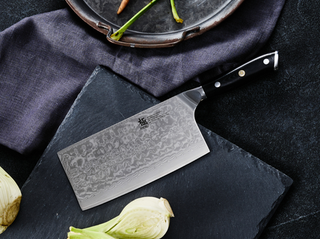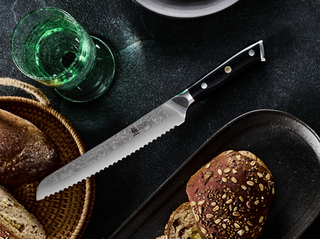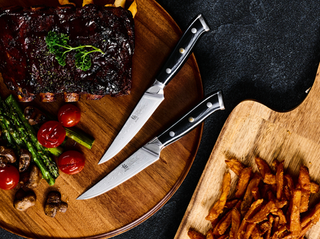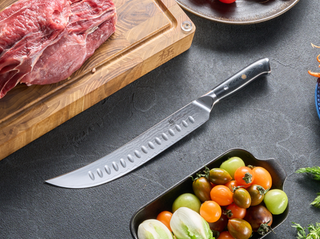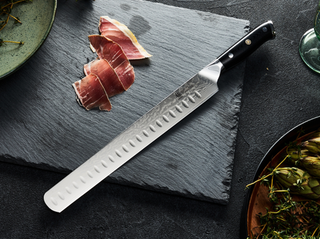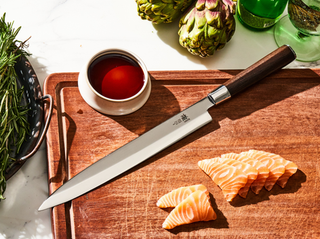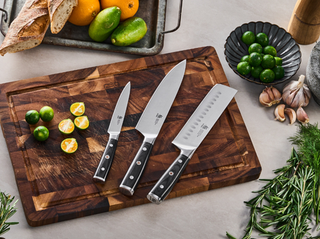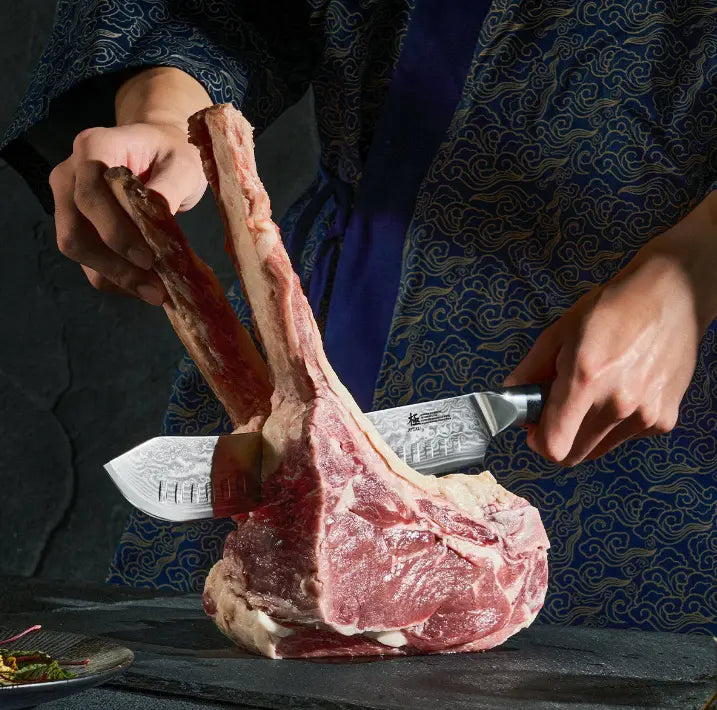Choosing the right knife is not just about filling your kitchen drawers with tools; it is about enhancing your cooking skills, improving the efficiency of your kitchen tasks, and ensuring the enjoyment of your culinary experiences. This guide will delve into a detailed comparison between two of the most pivotal tools in many kitchens: the butcher knife and the chef knife. Whether you are a professional chef or a home cooking enthusiast, understanding their nuances through the debate on butcher knife vs chef knife can significantly help you better find your style and preference.
What is a Butcher Knife?
A butcher knife is typically designed with a curved blade that ranges from 6 to 14 inches in length. It often has indentations that prevent food from sticking to the blade. Its hefty and sharp blade also allows for precise cuts, making it an essential tool for both restaurant chefs and home cooks who handle significant meat preparation.
What is a Butcher Knife Used For?
- Cutting and segmenting large pieces of meat: Butcher knives are ideal for handling large chunks of meat.
- Breaking down carcasses: In more specialized culinary settings, butcher knives can be used to break down carcasses into component parts.
- Trimming fat and sinew from cuts of meat: The sharpness and weight of the blade can enable precise fine-tuning of cuts.
What is a Chef’s Knife?
The Chef knife, on the other hand, is celebrated for its versatility and is considered a multipurpose culinary tool. Typically featuring a curved blade that ranges from 6 to 8 inches, chef knives are designed for a rocking motion on the cutting board.
What is a Chef’s Knife Used For?
- Preparing meat: The chef knife’s sharp edge and comfortable handling can make it well-suited for preparing a range of meats.
- Handling fish: The same sharp edge and control are also suitable for chefs to skillfully handle fish.
- Slicing and dicing vegetables and fruits: The agility of the chef knife can facilitate quick and uniform cuts that are crucial for vegetables and fruit.
Butcher Knife vs Chef Knife: A Specific Analysis
In the exploration of butcher knife vs chef knife, understanding the critical differences in blade length, blade shape, blade thickness, blade design, and best uses will help in choosing the ideal knife that best fits your culinary needs. Here is a comparison sheet to give you a clear overview.
| Feature | Butcher Knife | Chef Knife |
| Blade Length | Typically, 6 to 14 inches | Generally, 7 to 12 inches |
| Blade Shape | Most have a curved edge toward the end of the blade | Gentler curved edge |
| Blade Thickness | Heavier and thicker, which helps in cutting through meat | Lighter and more streamlined, aiding in delicate cutting tasks |
| Blade Design | Often includes indentations along the edge to reduce food sticking to the blade | Smooth surface or Granton edge, depending on different brands |
| Best Uses | Cutting and segmenting large pieces of meat; breaking down carcasses; trimming fat and sinew from cuts of meat | Preparing a range of meats; handling fish; slicing and dicing vegetables and fruits |
Best Recommendations of Butcher Knives and Chef Knives on the Market

In the debate on the butcher knife vs chef knife, you can see that each knife serves its distinct purpose in the kitchen. Your choice should align with the tasks you most frequently perform. Here are some top butcher knives and chef knives on the market that can be good choices for you.
1. 10″ BULLNOSE BUTCHER KNIFE | GIN SERIES
Crafted from cryogenically treated Japanese VG-10 steel, this knife boasts its durability and hygienic performance due to its ionic silver coating. Its scalpel-like edge and bullnose tip are also designed for precise cuts. With a 58-60 HRC Damascus steel blade and a comfortable fiberglass handle, this knife is ideal to be added to your kitchen.
2. 8" GYUTO CHEF KNIVES VG10 DAMASCUS STEEL | SHOGUN SERIES
This versatile knife is ideal for slicing meats, vegetables, and fruits, thanks to its precision-forged Damascus steel blade. The knife also has a finely honed edge and a distinctive hammered finish that enhances both its function and form.
3. 8" GYUTO CHEF KNIVES VG10 DAMASCUS STEEL SILVER-ION COATING | GIN SERIES
This knife is also crafted from VG-10 steel treated cryogenically and coated with silver ions to prevent bacterial growth. With its razor-sharp edge, it is suitable for precise cutting tasks across various ingredients.
In summary, this guide has invited you to explore the differences between a butcher knife and a chef knife. Through the debate on chef knife vs. butcher knife, you can see that a butcher knife is indispensable for those who frequently handle large cuts of meat, while a chef knife’s versatility makes it essential for a variety of cooking tasks. Anyway, a high-quality knife can not only improve the preparation process but also enhance your cooking experience. Consider your needs, test different knives if possible, and make an informed choice on Kyoku now!
